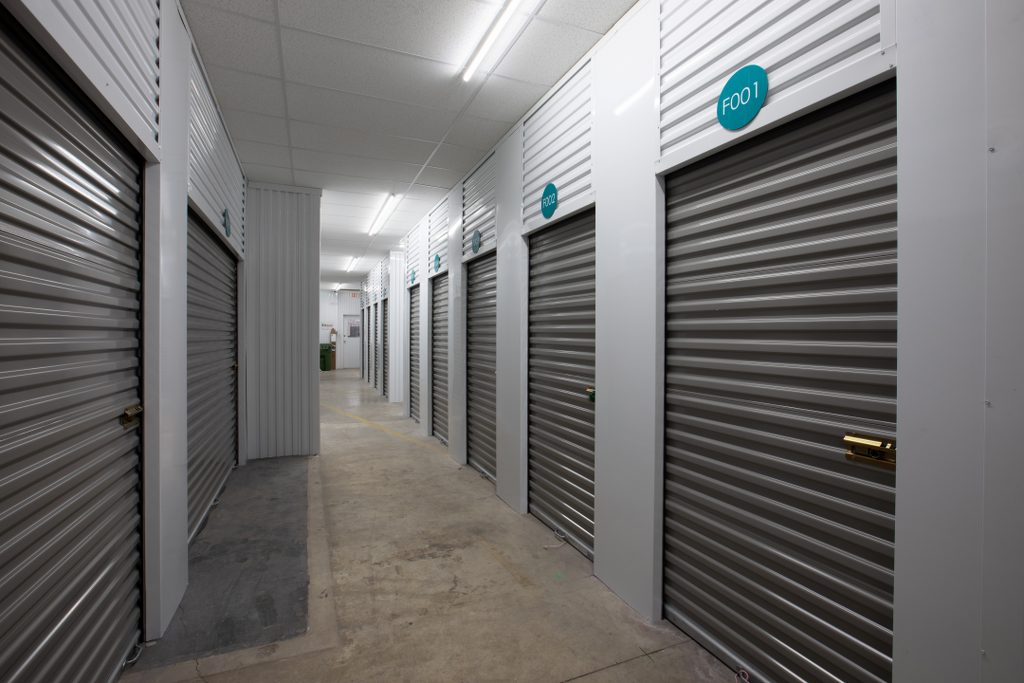5 Tips for Preventing Mold in Your Storage Unit
Bargain Storage
February 11th, 2025

Mold is a consequence of high humidity in a closed space, and this problem can affect your home and your storage unit. If the humidity is above 50%, mold outbreaks can occur. Anything within your storage unit can become vulnerable if moisture begins to grow. Mold, mildew, corrosion, and rust are all common issues that sometimes occur together. All of those problems can be potentially dangerous for your stored items. Any natural material and electronics, for example, are easily affected by mold. That's why, today, we will provide you with 5 tips for preventing mold in your storage unit! What are the tips for preventing mold in your storage unit?We will cover the most important tips for the prevention of mold. If you follow our advice, you should reduce your risk of mold to a minimum!
1. Protect your items when storing
The first thing you need to do is keep your belongings off the floors. You will be able to protect your valuables from mold and moisture in this manner. If you store your items on the floor, any water flowing in will reach them and potentially destroy them. You can use shelves or similar storage solutions like wooden pallets (which are very cheap). Moreover, if you elevate your items, you will prevent condensation from forming below your stored possessions.Another way to protect your items during long-term storage is by investing in proper packing. Packing your possessions in waterproof boxes or with silica gel will prevent mold from growing.
2. Pay attention when choosing your storage unit
Preventing moisture from forming in your storage unit is the most effective way to combat it. Investing in a high-quality, moisture-resistant storage unit would minimize all of your stress and anxiety.
When choosing a storage unit, knowing what you need is crucial, and you should pick an appropriately sized unit that fits your belongings so that they aren't cramped inside. Air conditioning and dehumidifiers are available in most storage facilities, and either of these temperature control devices can aid in the prevention of mold growth in storage units. Additional upgrades, such as adding vents or air conditioners, are always possible. All of these protection systems will help to prevent mold in your self storage unit.
3. Make use of a vapor barrier
Installing a vapor barrier is another way to make your storage unit damp-proof. To keep the moisture out, cover the warm side of the storage with polyethylene plastic or foil. This lightweight membrane should be mounted under the floor as well. This will keep moisture from the ground from seeping into the storage space, which is vital for preventing mold in your storage unit. An appropriate vapor barrier can be found in almost all hardware stores. It will help if your storage unit is organized before installing your barrier because you won't have to move things around as much. Additionally, consider installing a BA-FFD Watertight Floor Door for enhanced protection against water infiltration and ease of access to your storage space.
4. Utilize a DIY drying agent
You can use moisture-absorbent materials to protect your possessions. In addition, when moving liquids, be careful how you pack them. This will be very important if you don't want to pay for a climate-controlled storage unit. Mold in storage units is also prevented by collecting moisture. Silica gel, for example, is an excellent moisture absorbent. You can get a silica gel drying agent or related products at your local home improvement store. You can also DIY your own drying agent by sewing a cloth bag and filling it with silica gel. Be sure to remember that the drying agent will need to be replaced occasionally.
5. Check your storage unit for leaks, and measure the humidity levels
It's essential to check the humidity levels in your storage unit regularly, as they should never go above 50%. There are two ways to determine the humidity level. The first choice is to hire experts to complete the task for you. On the other hand, you can add a relative humidity meter yourself inside the storage room. Once you've had your humidity level checked, you'll know what to do next. You don't need to do anything if the level is below the recommended limit. If the humidity level is high, you can do a visual inspection of the whole unit. If you find mold, you should seek professional assistance. You should also search for the source, such as leaks, if you don't spot mold right away. When you've figured out what's causing the problem, take the appropriate measures to reduce the humidity level.
If you plan to use an outdoor storage unit, inspect it for possible leaks before purchasing or renting one. Look for gaps and holes in the storage unit. This is the most straightforward way to keep water out of your storage unit. Cracks, no matter how small or slightly visible, put your possessions at risk. The repair of these leaks is a critical step in preventing mold in storage units. Finally, remember to inspect the storage unit for leakage and other types of damage on a regular basis. New cracks may occur as a result of outdoor weather conditions and wear. These are probably the most important tips for preventing mold in your storage unit. If you need anything, we’re here to help!Bargain Storage facilities offer safe storage with all the precautions taken to prevent mold from attacking your valuable possessions! If you need any help, you can check out this helpful blog, where you will find valuable information. Our FAQ should answer most of your questions but feel free to contact us anytime for more details!
Storage Tips & Local News | Bargain Storage Blog
